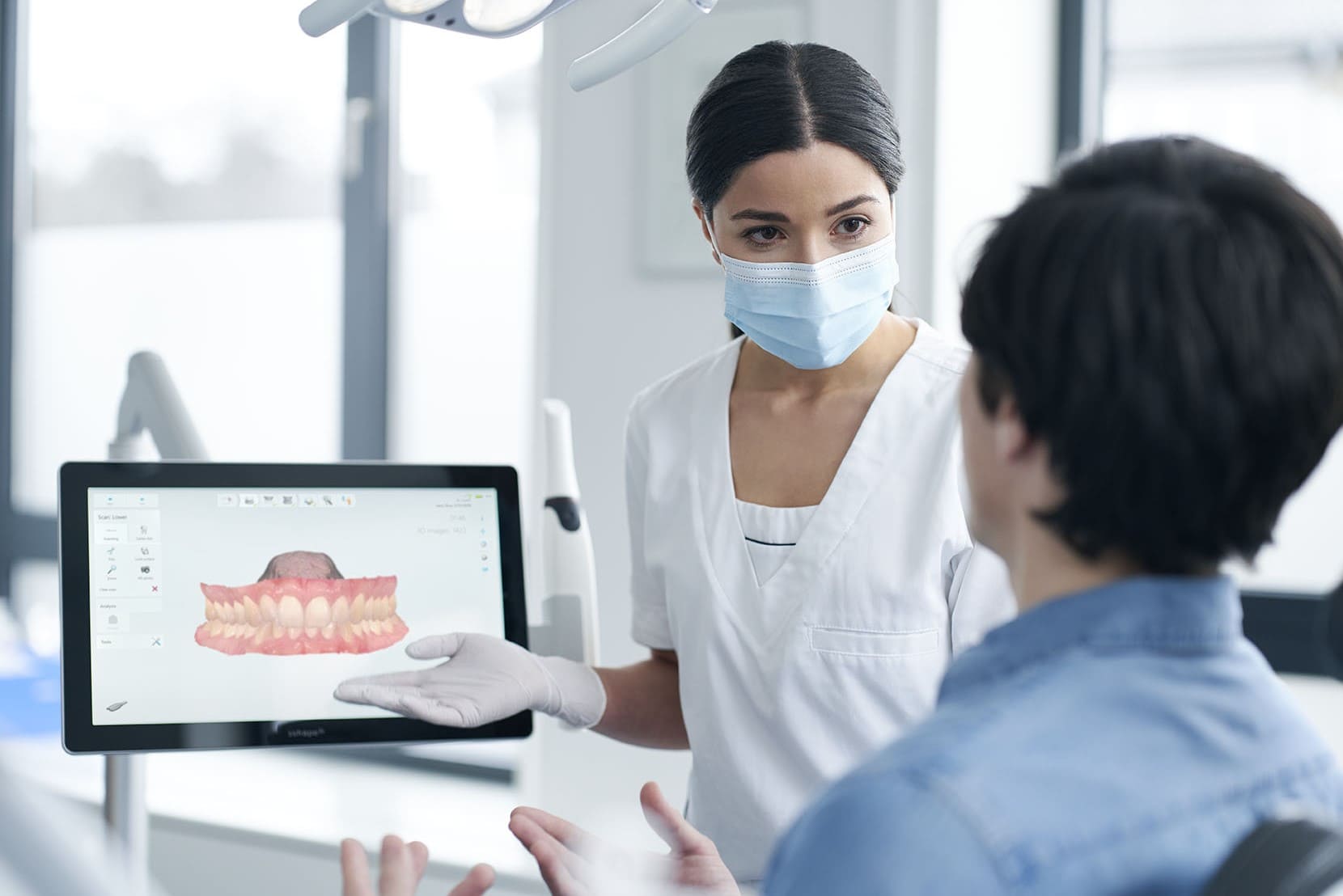Digital Impressions in Forest Hill, Toronto
In order to offer patients dental care services that meet our standards, your oral exam with Dr. Paul Deratnay can also include digital impressions. Digital impressions are dental scans taken with 3D scanning technology.
The digital impression system captures the dentition with the use of polygons (triangles) and by that, it helps build up a highly accurate 3D image of the patient’s dentition. There are different ways of getting to a digital impression: either a desktop scanner scans a gypsum model to generate a digital model, or an intraoral scanner generates a digital impression directly from the patient’s oral cavity. Intraoral scanning creates digital replicas of teeth and gums, and displays the result directly on a computer or tablet screen. The dental specialist can then use these digital teeth impressions for assessing whether there is a problem, what it is, what treatment could be required, and communicating about all this with the patient.

Here are some cases where digital impressions can be used (and the list grows longer and longer, the more advanced digital dentistry is becoming):
- Dentures creation (complete, partial, immediate)
- Teeth alignment planning (braces, clear aligners, and other appliances)
- Splints, mouth guards or dental sleep devices
- Dental implants placement
- Performing guided surgery
- Preventative dentistry (monitoring)
- Caries detection
Digital Impressions vs. Traditional Impressions
Even with 3d digital dental impressions and digital dentistry in general being on the rise, there are still many dentists that prefer conventional impression taking methods. Alginate is the most used material for traditional impressions. Even though the process of taking alginate impressions is not a painful medical procedure, patients do need to sit for multiple minutes or longer.

In a chair, holding a lump in their mouth that tastes and smells unpleasant. It is not a secret that impression taking in this way can create unpleasant associations with going to the dentist. In addition, the impression taking procedure can cause gag reflex and even vomiting in some patients, which can complicate the acquisition of an impression the acquisition of an impression.